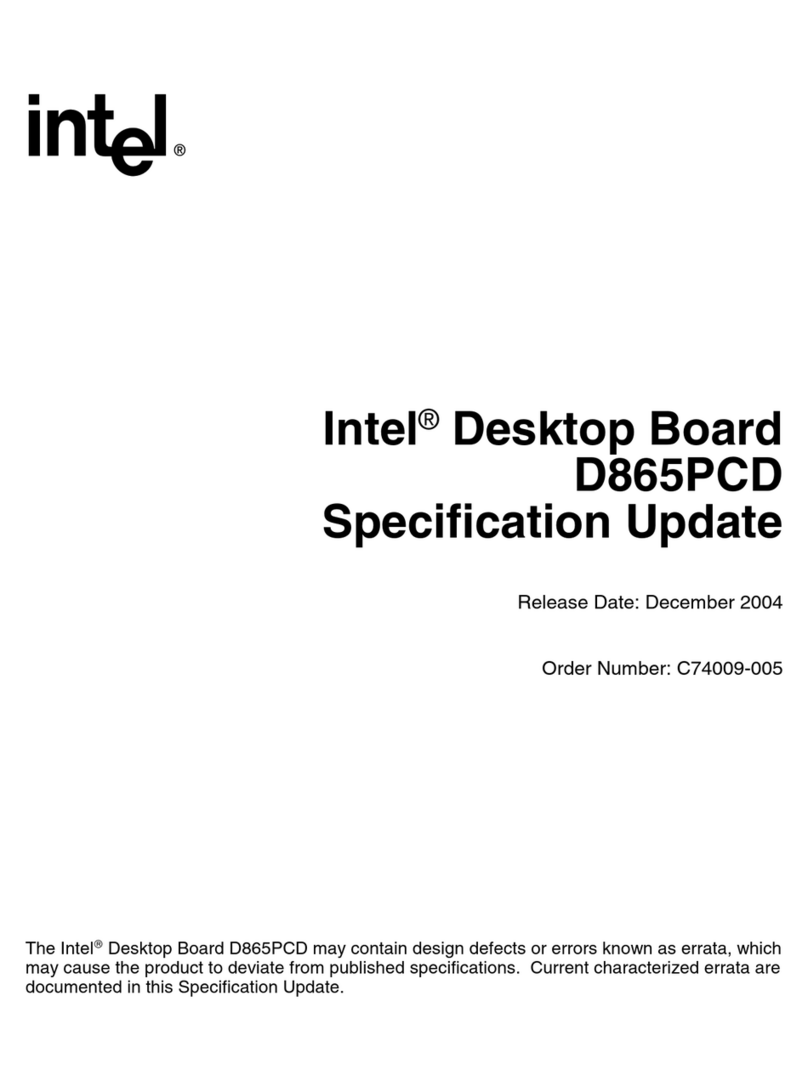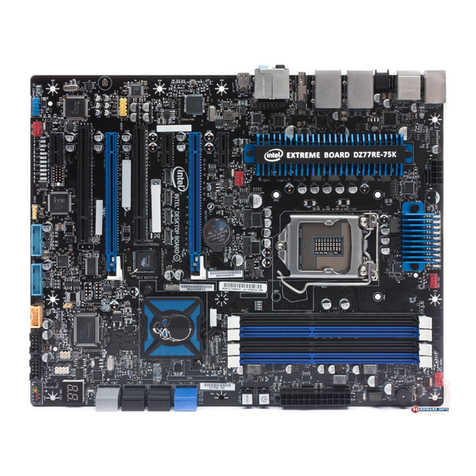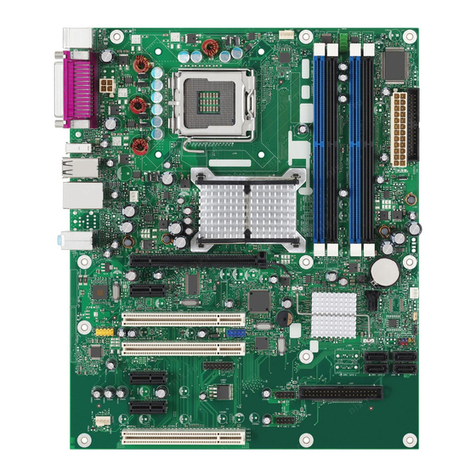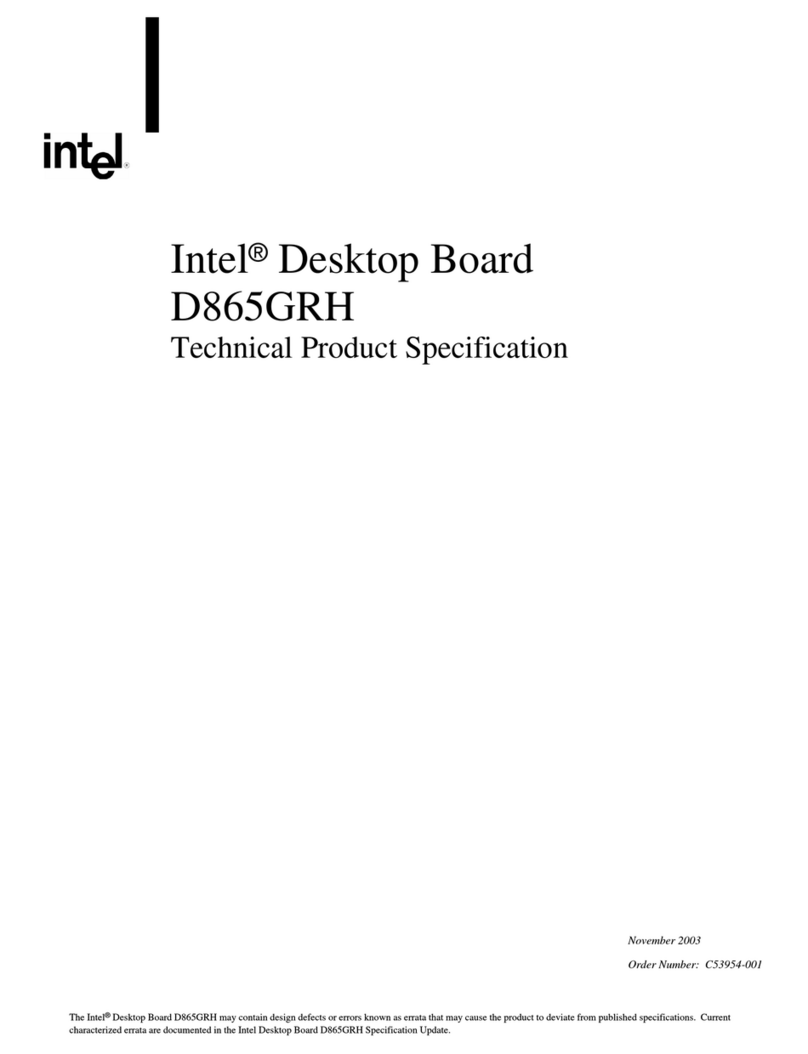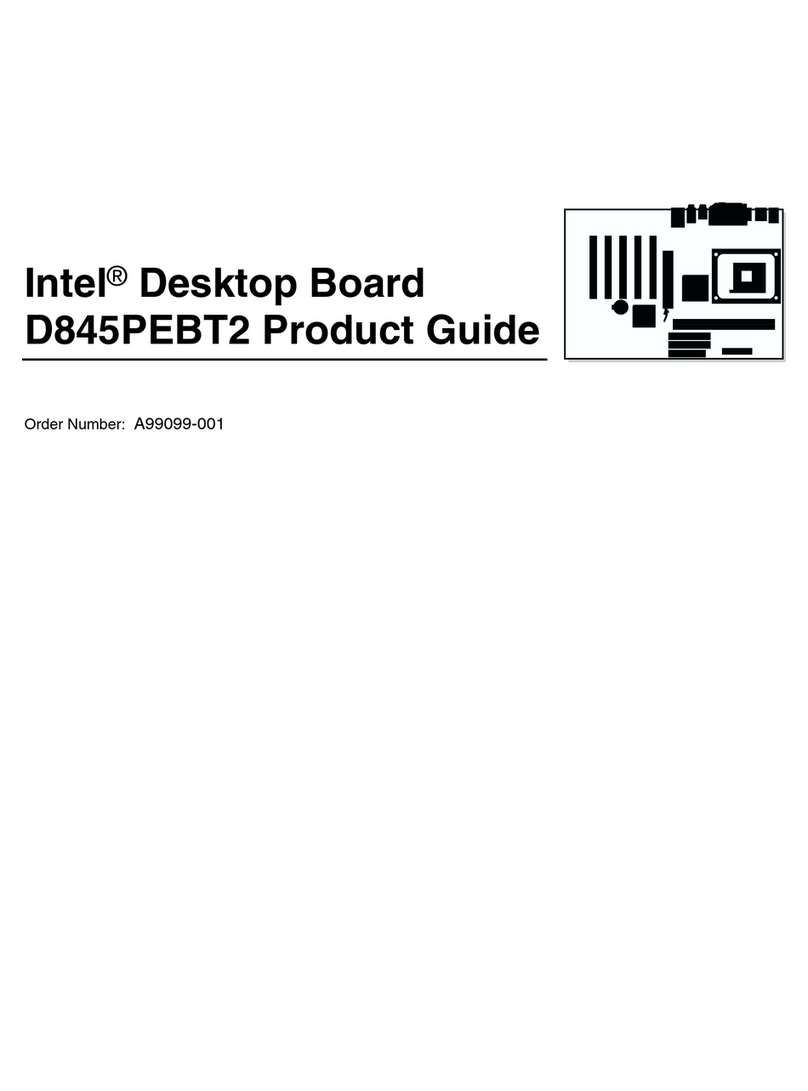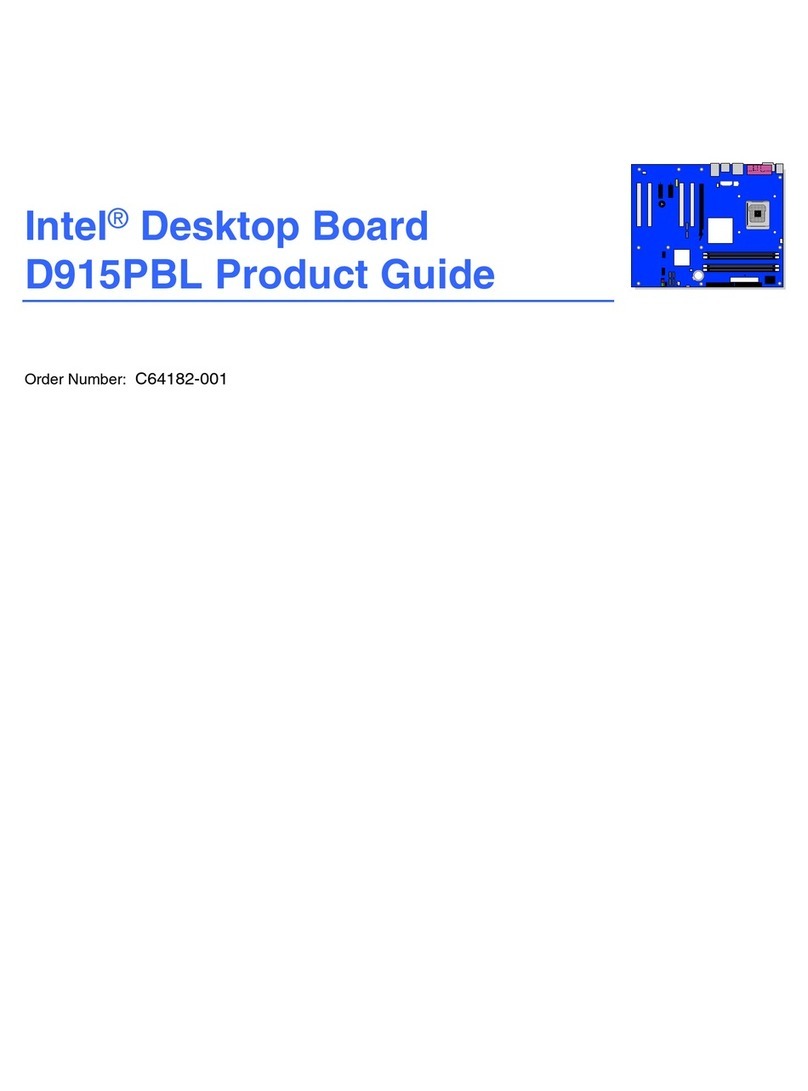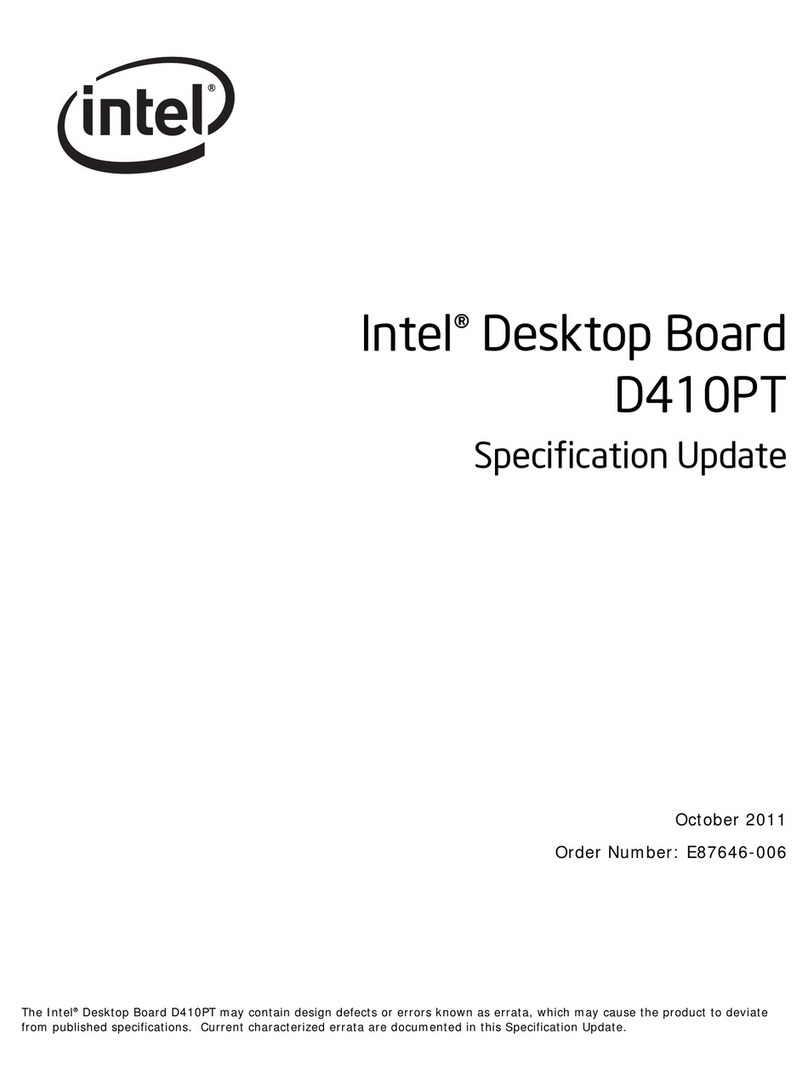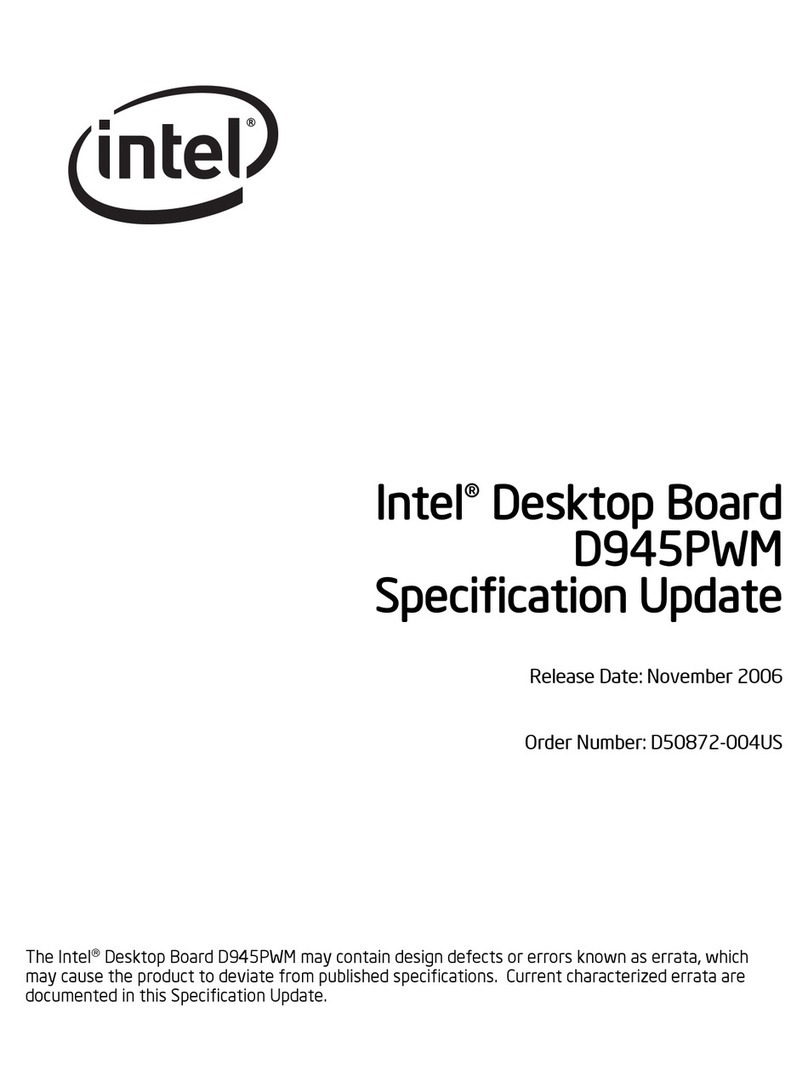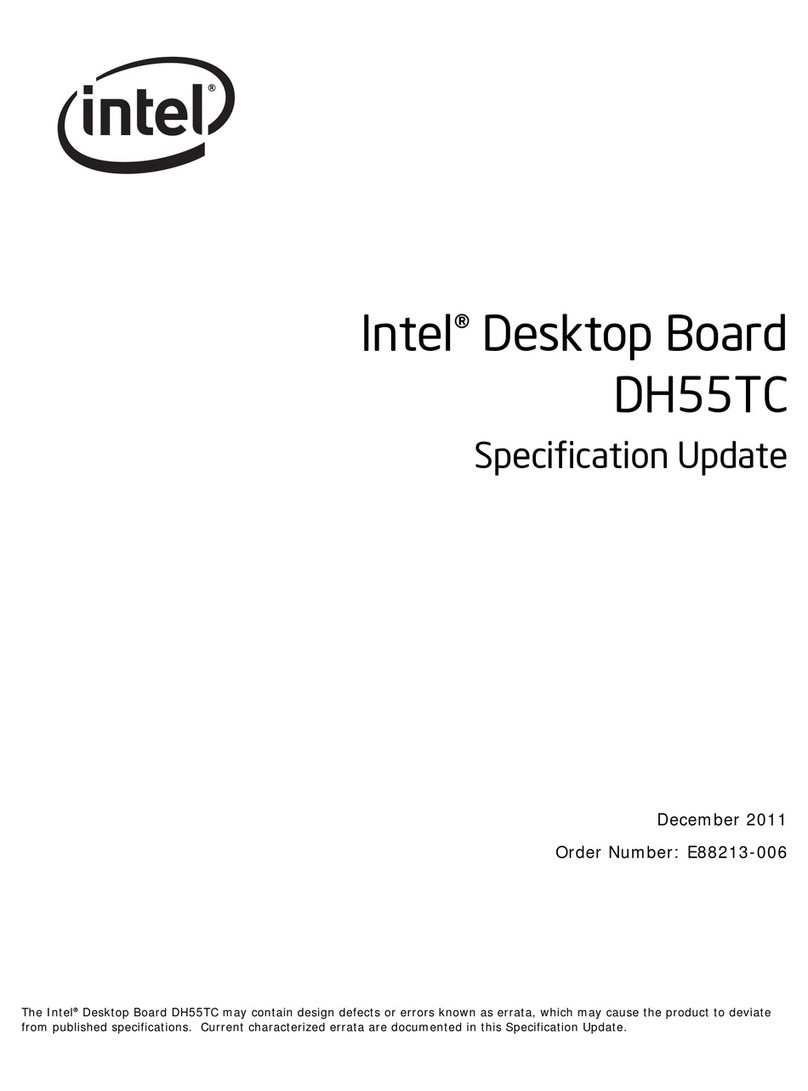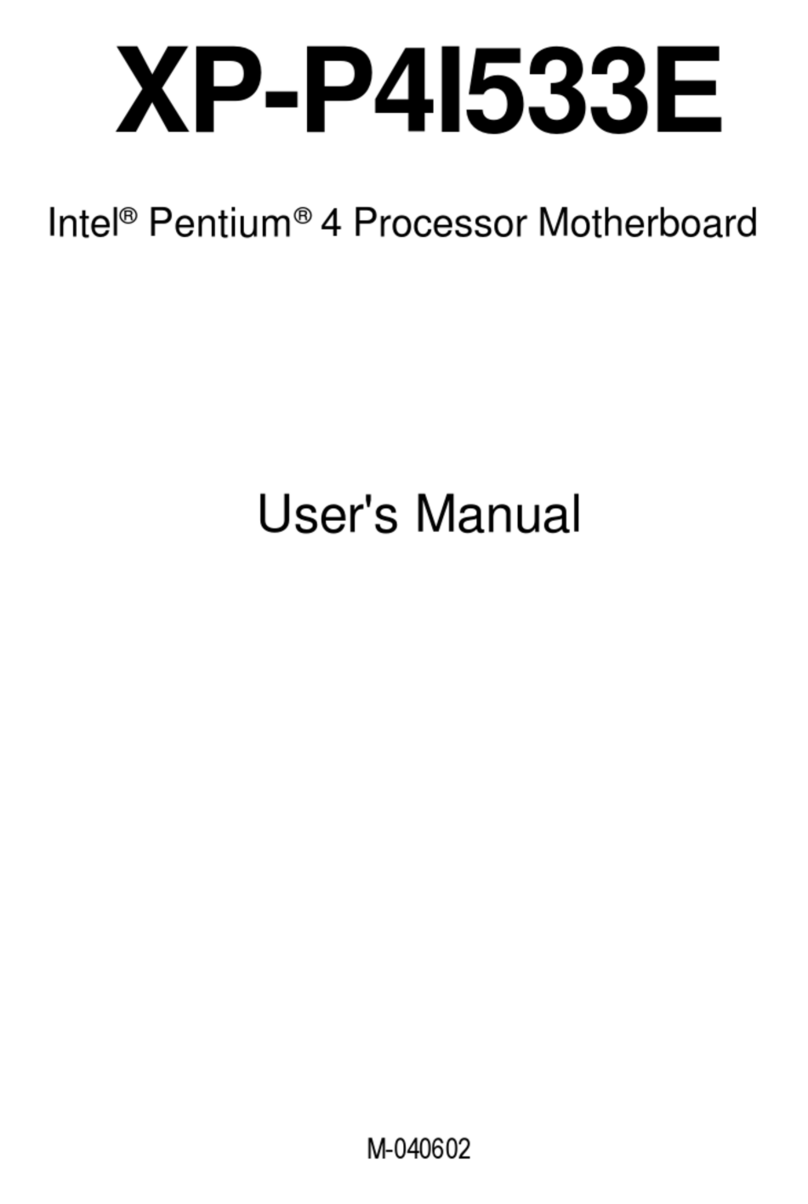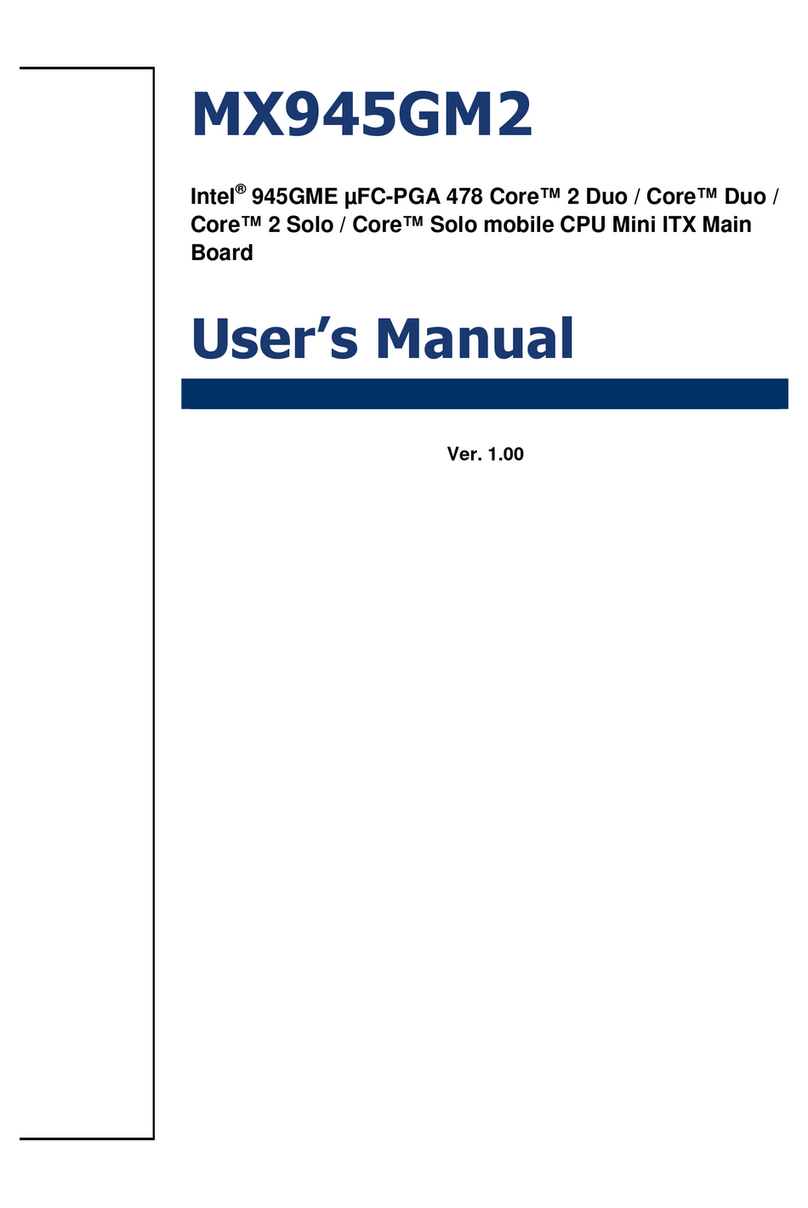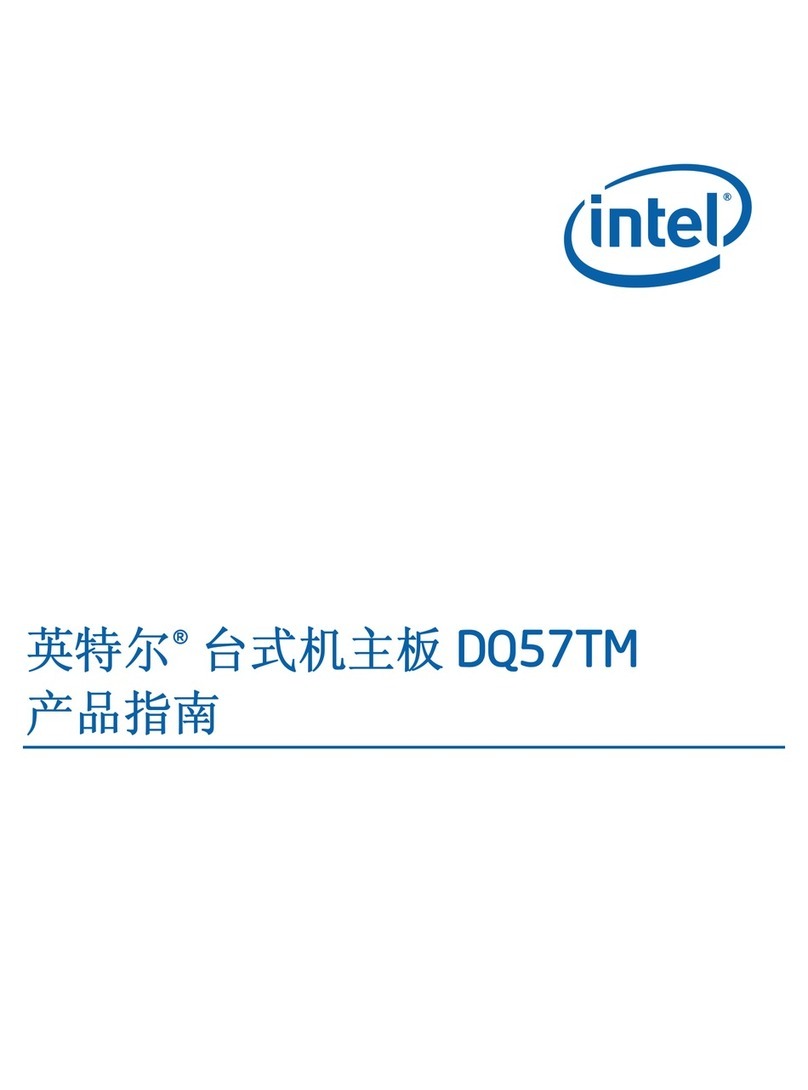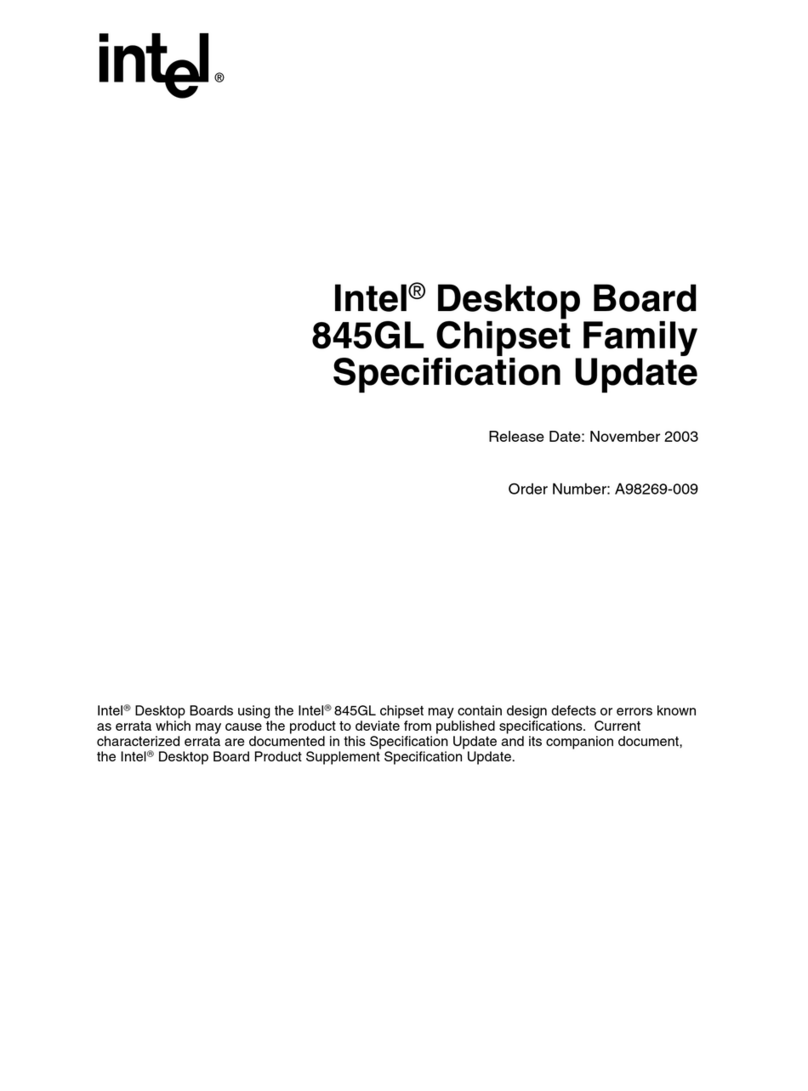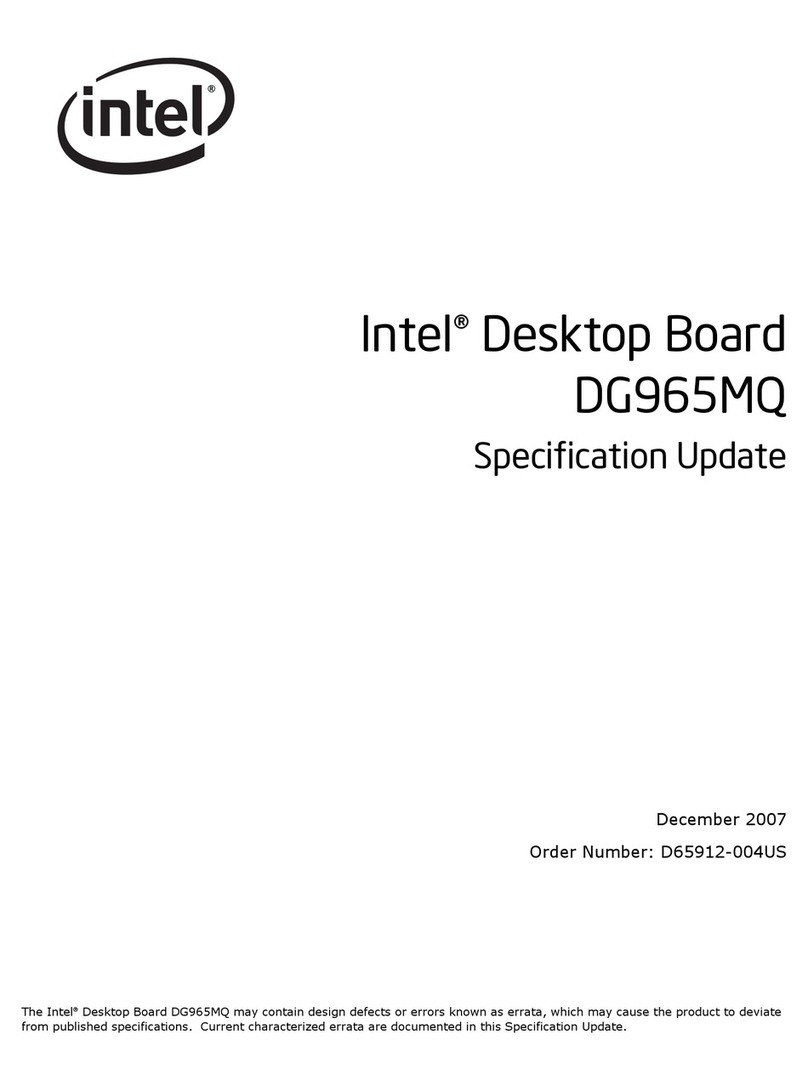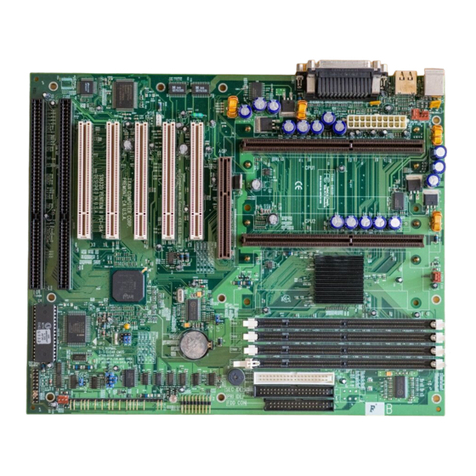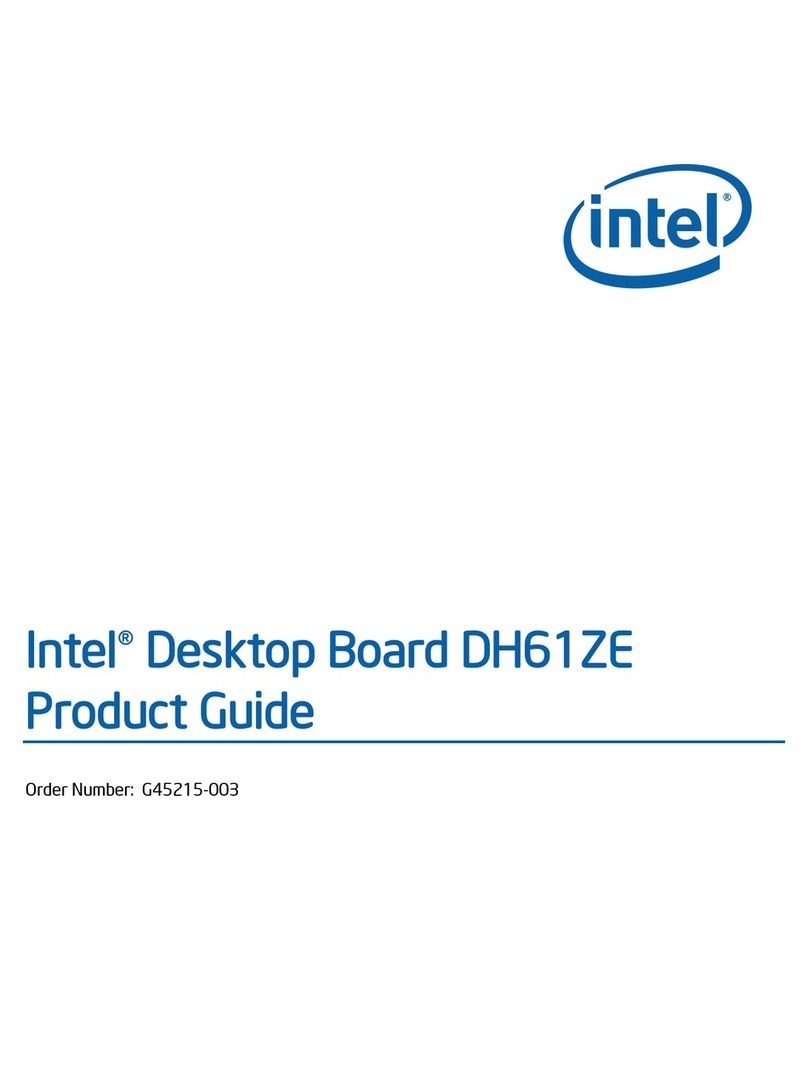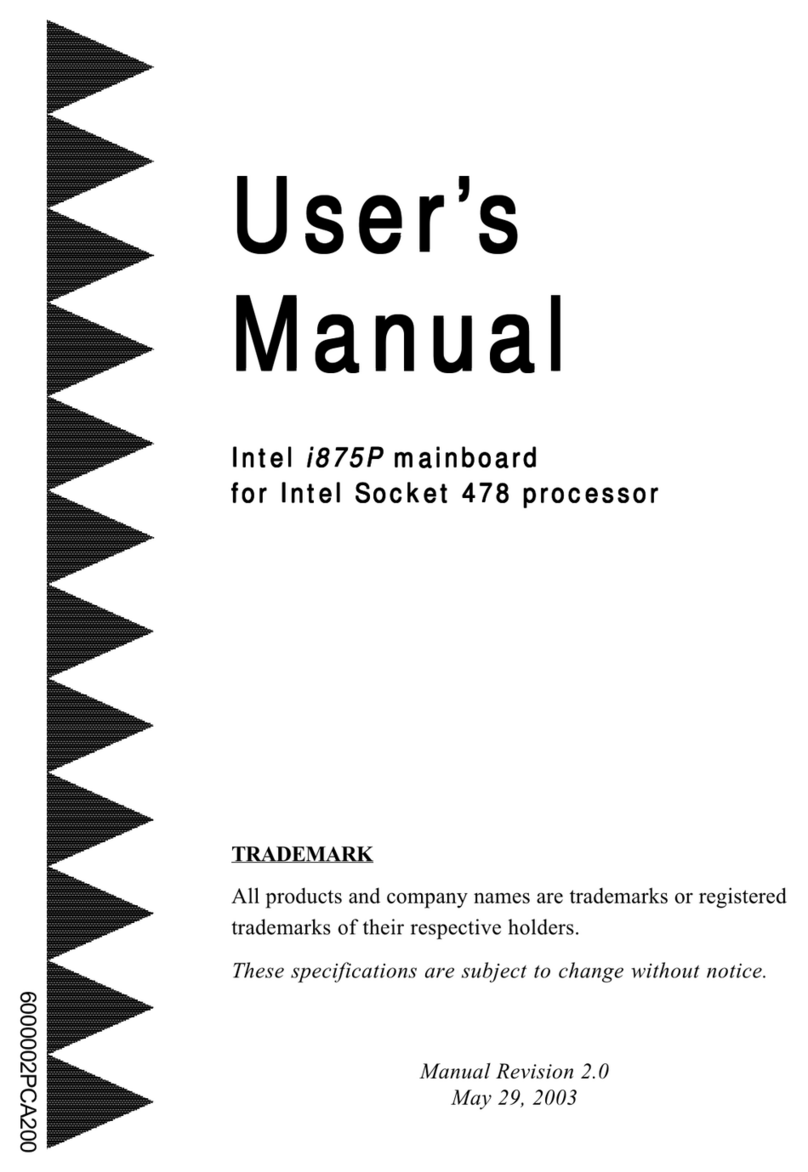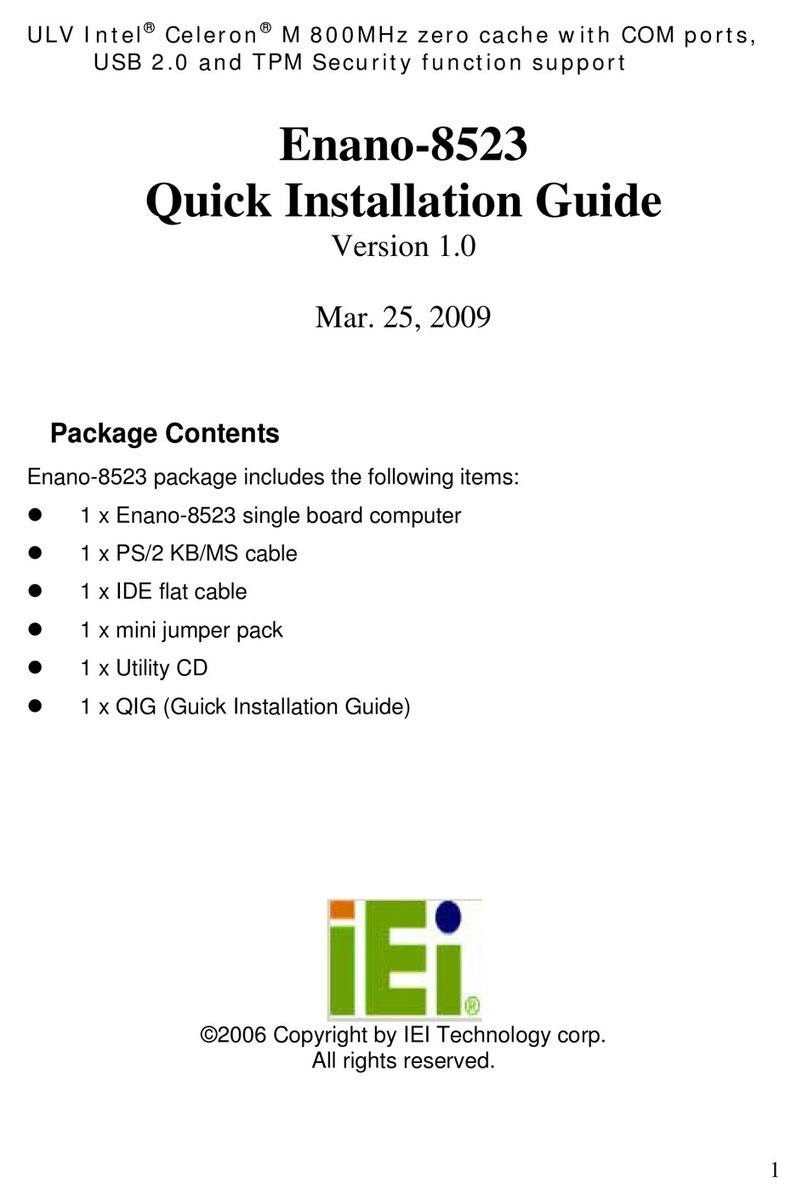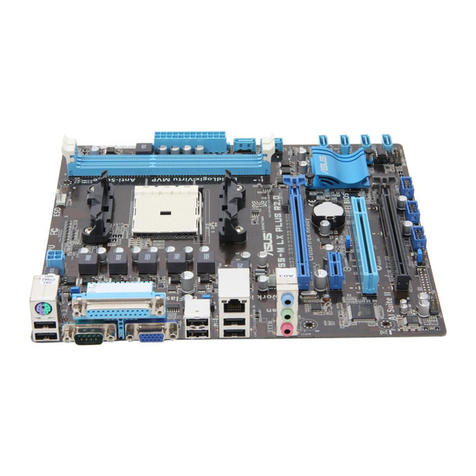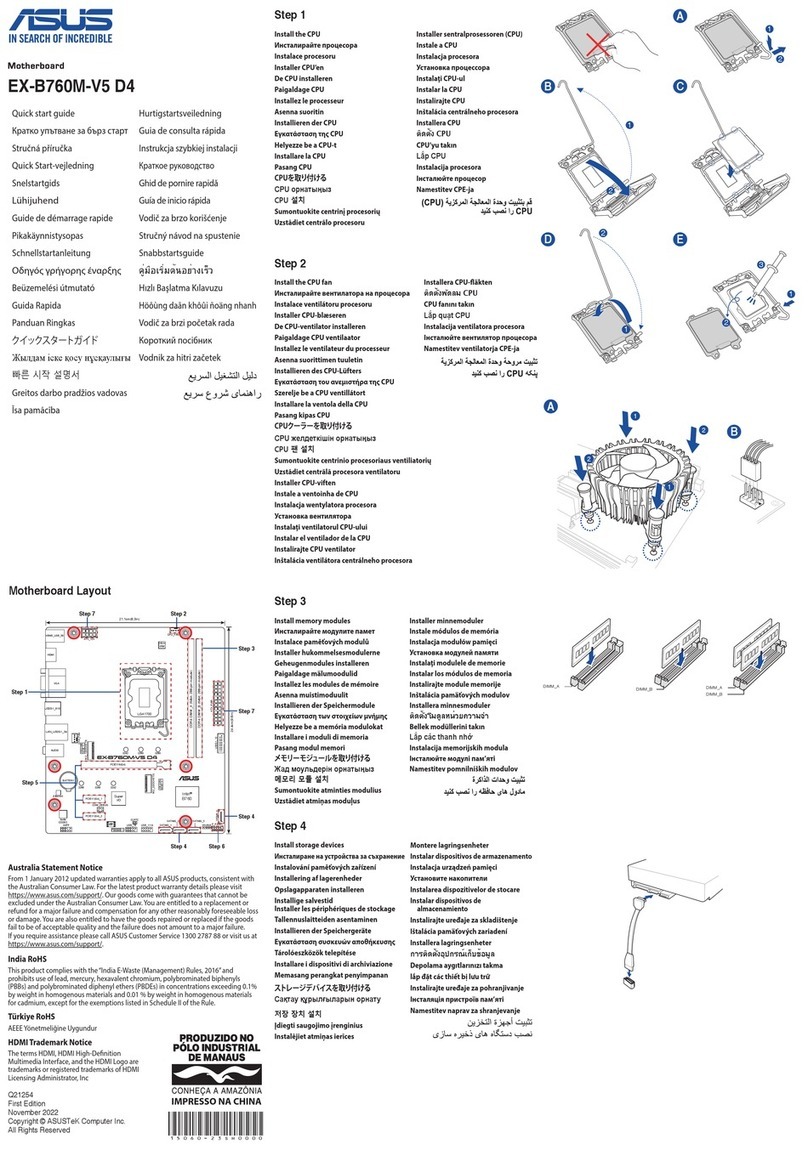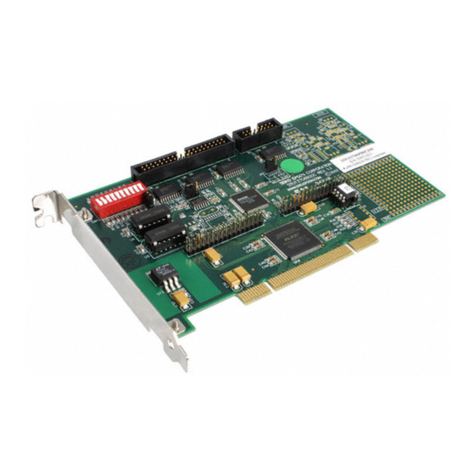4Intel®440Bx Scalable Performance Board Development Kit Manual
Contents
3.2.19 AGP Connector......................................................................................................24
3.2.20 Post Code Debugger.............................................................................................24
3.2.21 Clock Generation...................................................................................................24
3.2.22 Interrupt Map .........................................................................................................25
3.2.23 Memory Map..........................................................................................................25
4 Hardware Reference.............................................................................................................27
4.1 Processor Assembly...........................................................................................................27
4.1.1 Thermal Management............................................................................................27
4.1.2 In-Target Probe Debugger Port.............................................................................27
4.2 Post Code Debugger..........................................................................................................28
4.3 ISA and PCI Expansion Slots.............................................................................................28
4.4 PCI Device Mapping...........................................................................................................28
4.5 Connector Pinouts..............................................................................................................29
4.5.1 ATX Power Connector...........................................................................................29
4.5.2 ITP Debugger Connector.......................................................................................30
4.5.3 Stacked USB .........................................................................................................30
4.5.4 Mouse and Keyboard Connectors.........................................................................31
4.5.5 Parallel Port...........................................................................................................31
4.5.6 Serial Ports............................................................................................................32
4.5.7 IDE Connector.......................................................................................................32
4.5.8 Floppy Drive Connector.........................................................................................33
4.5.9 PCI Slot Connector................................................................................................34
4.5.10 ISA Slot Connector................................................................................................35
4.6 AGP Connector...................................................................................................................36
4.7 Jumpers..............................................................................................................................37
4.7.1 Enable Spread Spectrum Clocking (J14)...............................................................37
4.7.2 Clock Frequency Selection (J15)...........................................................................37
4.7.3 On/Off (J20)...........................................................................................................37
4.7.4 Flash BIOS VPP Select (J21)................................................................................38
4.7.5 Flash BIOS Boot Block Control (J22) ....................................................................38
4.7.6 SMI# Source Control (J23)....................................................................................38
4.7.7 CMOS RAM Clear (J24)........................................................................................38
4.7.8 Push Button Switches............................................................................................38
4.8 In-Circuit BIOS Update.......................................................................................................39
5 BIOS Quick Reference.........................................................................................................41
5.1 BIOS and Pre-Boot Features..............................................................................................41
5.2 Power-On Self-Test (POST)...............................................................................................41
5.3 Setup Screen System.........................................................................................................43
5.3.1 Basic CMOS Configuration Screen .......................................................................43
5.3.2 Configuring Drive Assignments .............................................................................44
5.3.2.1 Configuring Floppy Drive Types.............................................................44
5.3.3 Configuring IDE Drive Types.................................................................................45
5.4 Configuring Boot Actions....................................................................................................46
5.5 Custom Configuration Setup Screen..................................................................................46
5.6 Shadow Configuration Setup Screen..................................................................................47
5.7 Standard Diagnostics Routines Setup Screen....................................................................48
5.8 Start System BIOS Debugger Setup Screen......................................................................48
5.9 Start RS232 Manufacturing Link Setup Screen..................................................................49
